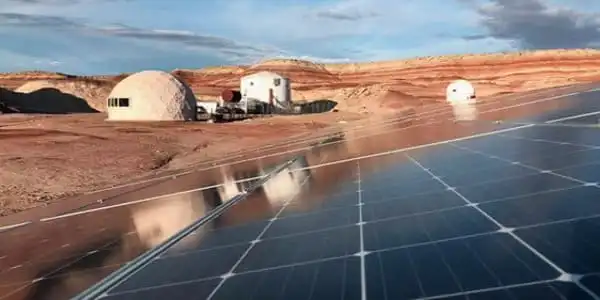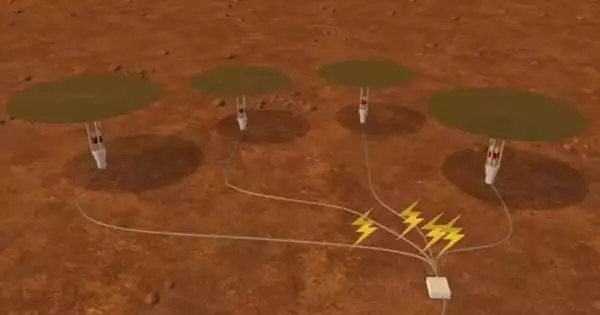A new analysis suggests that solar power would be preferable to nuclear power for crewed Martian missions near the planet’s equator. The Mars Exploration Rovers, like Mars Pathfinder, are powered by solar panels. Solar arrays on panels atop what appear to be the rover’s “wings” absorb energy. They were created to maximize the area of solar cells that collect energy from the sun.
Researchers discovered that photovoltaic systems might sufficiently power a six-person Red Planet trip, adding to decades of research on the benefits of solar power as employed by robotic NASA Mars explorers such as the Spirit and Opportunity rovers and the InSight lander.
The study authors also observed that humans might clean the solar panels on-site, avoiding the problem of dust buildup that has plagued Mars probes over the years. (In 2018, a massive dust storm killed Opportunity.)
The modeling work of the team reveals that, as long as the crewed mission is positioned around the sun-rich Martian equator, the metrics of solar intensity and surface temperature would have a better tradeoff in terms of mass required and energy generated than a nuclear fission system. The model assumes that solar energy may be stored locally with a compressed hydrogen energy system (as hydrogen would likely be feasible to mine on the Martian surface, if needed).
The goal is to eventually build out a whole model of the system, with all of the components included, that we envision as helpful to plan a voyage to Mars, evaluate tradeoffs, identify risks, and come up with mitigation methods either before or during the flight.
Aaron Berliner
“Nearer the equator, solar wins; nearer the poles, nuclear wins,” research co-lead author Aaron Berliner, a bioengineering graduate student at the University of California, Berkeley’s Arkin Laboratory, said in a statement. The Martian poles, on the other hand, are a more severe environment for humans to tolerate, with less sunlight and larger temperature variations than equatorial locations.
The researchers considered not just the mass and energy of the two competing systems, but also environmental factors such as how gases and particles in Mars’ atmosphere absorb and deflect light. The purpose was to learn more about how much solar radiation would reach the Martian surface and where solar arrays should be placed.
The solar panels would divide water molecules into oxygen and hydrogen, with the hydrogen being stored in pressure tanks. Later, the hydrogen would be energized within fuel cells to generate electricity. Unused hydrogen might be recycled to help make ammonia to fertilize plants, as long as it is coupled with nitrogen in the same way that it is done on Earth.

Other technologies, including as water electrolysis to generate hydrogen and hydrogen fuel cells, may potentially be used on Mars, according to the researchers. These technologies are often expensive on Earth, but they might be “game-changing” on the surface of Mars, where everything would need to be imported at great expense from Earth or made with the resources available on the surface.
Berliner and Anthony Abel, a UC Berkeley Ph.D. student in chemical and biomolecular engineering, are both members of the Center for the Utilization of Biological Engineering in Space (CUBES), which includes multiple academic institutions.
According to the statement, the solar power situation matches with work that CUBES already has underway. The group’s goal is to create microbes capable of producing plastics from carbon dioxide and hydrogen, as well as medications from carbon dioxide and sunshine. The researchers intend to use the new article, which sets a “budget” for electricity and hydrogen on Mars, to advance the CUBES biotechnologies.
“The goal is to eventually build out a whole model of the system, with all of the components included, that we envision as helpful to plan a voyage to Mars, evaluate tradeoffs, identify risks, and come up with mitigation methods either before or during the flight,” Berliner explained.
Using solar power limits the areas that landed rover missions can investigate on Mars. They can only land and travel around the equatorial zone, where they can obtain enough sunlight to recharge their batteries. NASA is researching other power sources for future missions in order to expand the area on Mars that may be examined, perhaps opening up the entire planet to exploration.





